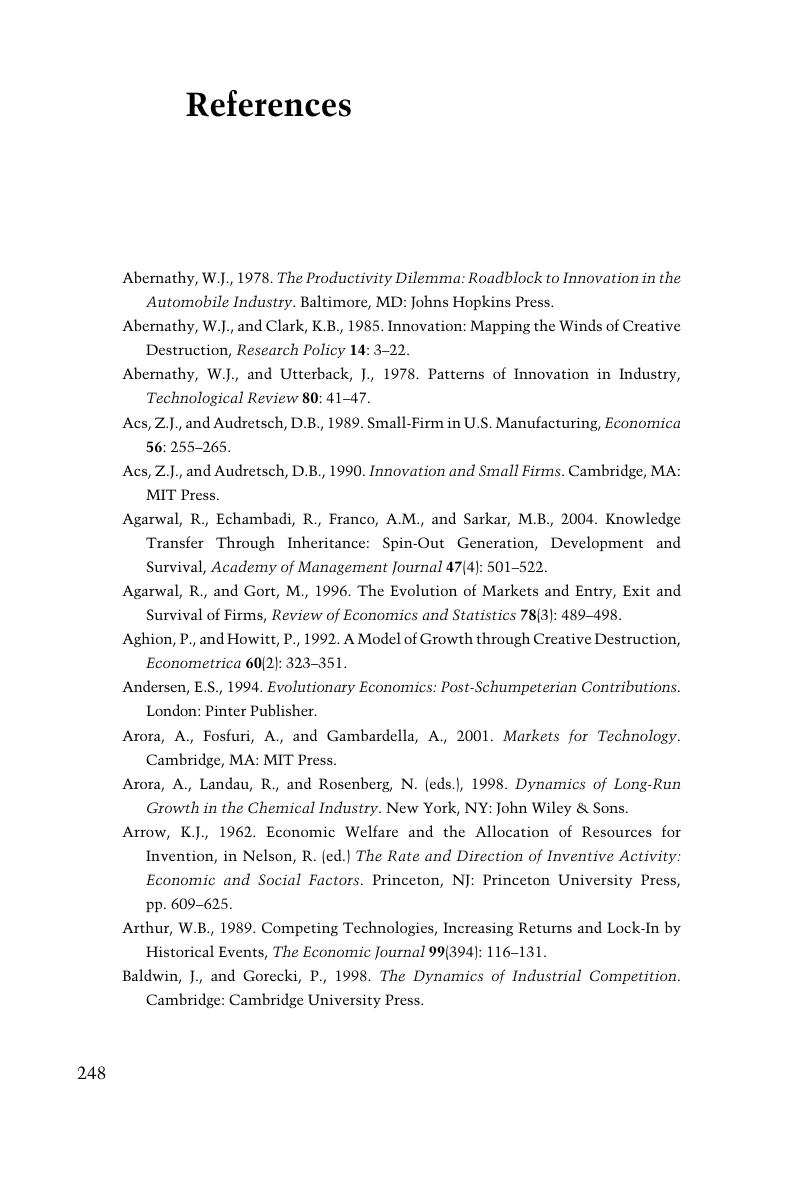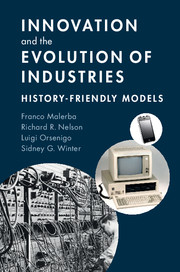Book contents
- Frontmatter
- Contents
- List of figures
- List of tables
- Preface and acknowledgments
- Codes
- Some remarks about notation
- 1 Innovation and industrial evolution
- 2 History-friendly models: methods and fundamentals
- 3 The US computer industry and the dynamics of concentration
- 4 Vertical integration and dis-integration in the computer industry
- 5 The pharmaceutical industry and the role of demand
- 6 Reprise and conclusions
- References
- Author index
- Subject index
- References
References
Published online by Cambridge University Press: 05 August 2016
- Frontmatter
- Contents
- List of figures
- List of tables
- Preface and acknowledgments
- Codes
- Some remarks about notation
- 1 Innovation and industrial evolution
- 2 History-friendly models: methods and fundamentals
- 3 The US computer industry and the dynamics of concentration
- 4 Vertical integration and dis-integration in the computer industry
- 5 The pharmaceutical industry and the role of demand
- 6 Reprise and conclusions
- References
- Author index
- Subject index
- References
Summary

- Type
- Chapter
- Information
- Innovation and the Evolution of IndustriesHistory-Friendly Models, pp. 248 - 262Publisher: Cambridge University PressPrint publication year: 2016



